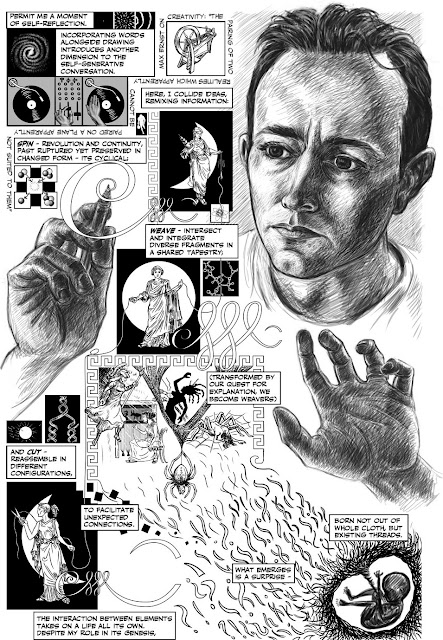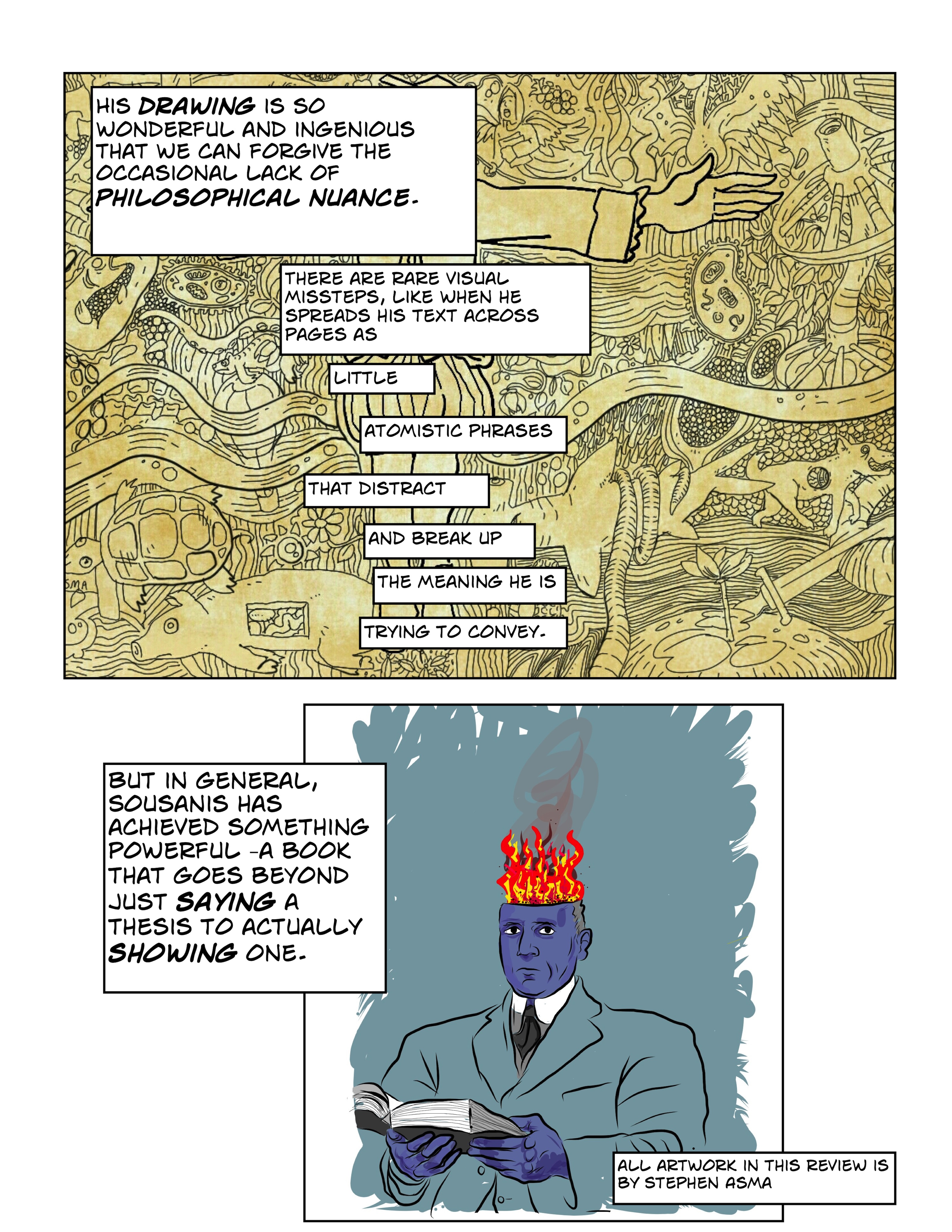


The book includes a wonderful "Notes" section that offers some background on the inspiration behind many of the images (including Flatland, Calvino's Six Memos for the New Millennium, Deleuze & Guattari, and many others) a bibliography for further reading, and a series of maps of the structure of the book when it was a work-in-progress. Readers will find thoughtful reflections on the possibilities and constraints afforded by working and thinking with different kinds of verbal and visual language, including a consideration of comics as "an amphibious language of juxtapositions and fragments," and some wonderful work on storytelling and imagination. It proposes that we think about unflattening as a "simultaneous engagement of multiple vantage points from which to engender new ways of seeing," and beautifully embodies what it can look like to make that happen. Unflattening (Harvard University Press, 2015) uses the medium of comics to explore "flatness of sight" and help readers think and work beyond it by opening up new perceptive possibilities. There is an upswell of comics that deal with trauma in people’s life, often because words sometimes can’t address what people are experiencing.Nick Sousanis's new book is a must-read for anyone interested in thinking or teaching about the relationships between text, image, visuality, and knowledge. – Stitches by David Small (memoir of growing up in Detroit) Jimmy Corrigan, the Smartest Kid on Earth is his most recent It’s hard because they’re sad things, but it’s worth reading. Who are you reading, asks an audience member. He might create some scaffolding sketches to lay out the overall structure of the the panel, fill in detail, and then move back and forth to adjust detail and overview as it proceeds. He might start with the idea that a panel needs to communicate something about nonlinear thinking. I agree 🙂Īn audience member asks, “what’s your process?” Nick responds that his works are philosophical excursions.

Nick answers that he hasn’t found any examples of this, and that we should try it. Does Nick know of any examples of ways that people have a conversation between people via comics? Words are great because we have strategies like summarisation and argumentation that allow us to talk to each other and collaborate to improve an idea or make a decision. I ask Nick about the possibility of dialectic in comics.


 0 kommentar(er)
0 kommentar(er)
